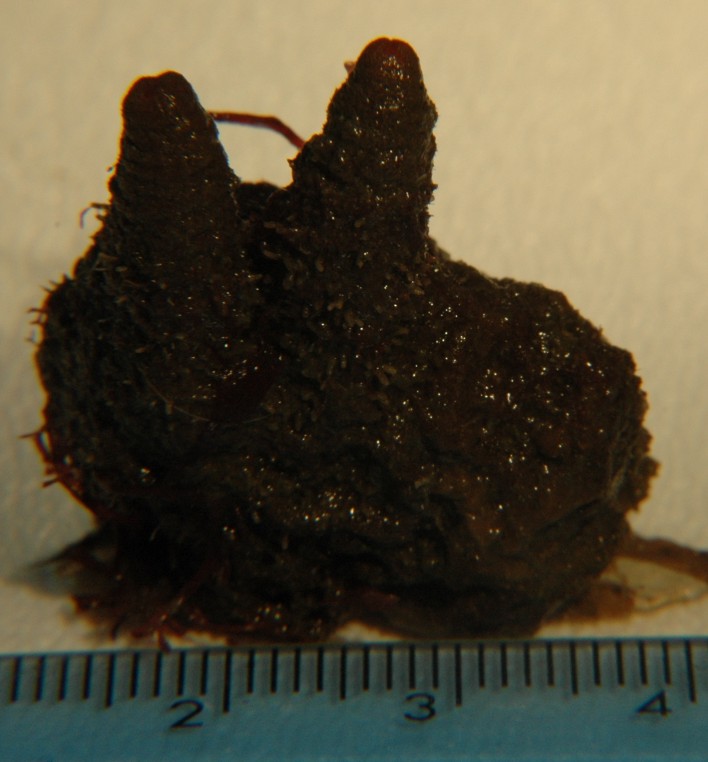Pyura haustor (Stimpson, 1864)Common name(s): Wrinkled seapump, Wrinkled sea squirt, Warty tunicate |
|
| Synonyms: Cynthia erecta, Cynthia haustor, Cynthia macrosiphonus, Halocynthia haustor, Halocynthia haustor foliacea, Halocynthia johnsoni |  |
| Phylum Chordata
Subphylum Urochordata Class Ascidiacea Order Stolidobranchia Family Pyuridae |
|
| Pyura haustor, subtidal from Sares Head. Scale is cm. Animal appears partly encrusted, and the siphons are not fully extended. | |
| (Photo by: Dave Cowles July 2005) | |
How to Distinguish from Similar Species: The rough tunic, broad attachment, tall stature, and red on the siphons distinguish this species.
Geographical Range: Shumagin Islands, Alaska to San Diego, CA. Now less common in S CA bays than in the past.
Depth Range: Low intertidal to 200 m
Habitat: Rocks, pilings, floats, kelp holdfasts; protected and exposed coasts
Biology/Natural History: This species is usually solitary but occasionally a few clump together. This is the most common tunicate in the San Juan Islands but avoids areas of the highest currents. Its hemispherical body is often covered with sand, shell, or debris, and it has been called "the champion tunicate junk collector". The siphons project far from the body when feeding underwater, but can be retracted most of the way if disturbed or when out of the water. Diet includes crustacean, echinoderm, and mollusk larvae and eggs, as well as the larvae and eggs of tunicates. Predators include the seastar Solaster stimpsoni. May have the commensal copepod Pygodelphus aquilonaris or the protozoans Trichophyra salparum, Euplotaspis cionaecola, or Parahypocoma rhamphisokarya. May or may not brood its young (conflicting reports). Has gray eggs. The tunic is 13% organic, including 40% protein and 60% carbohydrate, but does not concentrate vanadium.
| Return to: | |||
| Main Page | Alphabetic Index | Systematic Index | Glossary |
References:
Dichotomous Keys:Flora and Fairbanks, 1966
Kozloff 1987, 1996
Smith and Carlton, 1975
General References:
Brusca
and Brusca, 1978
Gotshall,
1994
Harbo,
1999
Johnson
and Snook, 1955 (As Halocynthia haustor)
Kozloff,
1993
Morris
et al., 1980
O'Clair
and O'Clair, 1998
Ricketts
et al., 1985
Sept,
1999
Scientific Articles:
Zeng,
Liyun, Molly W. Jacobs, and Bill J. Swalla, 2006.
Coloniality
has evolved once on Stolidobranch ascidians. Integrative and
Comparative
Biology 46:3 pp 255-268
Web sites:
General Notes and Observations: Locations, abundances, unusual behaviors:
Authors and Editors of Page:
Dave Cowles (2005): Created original page